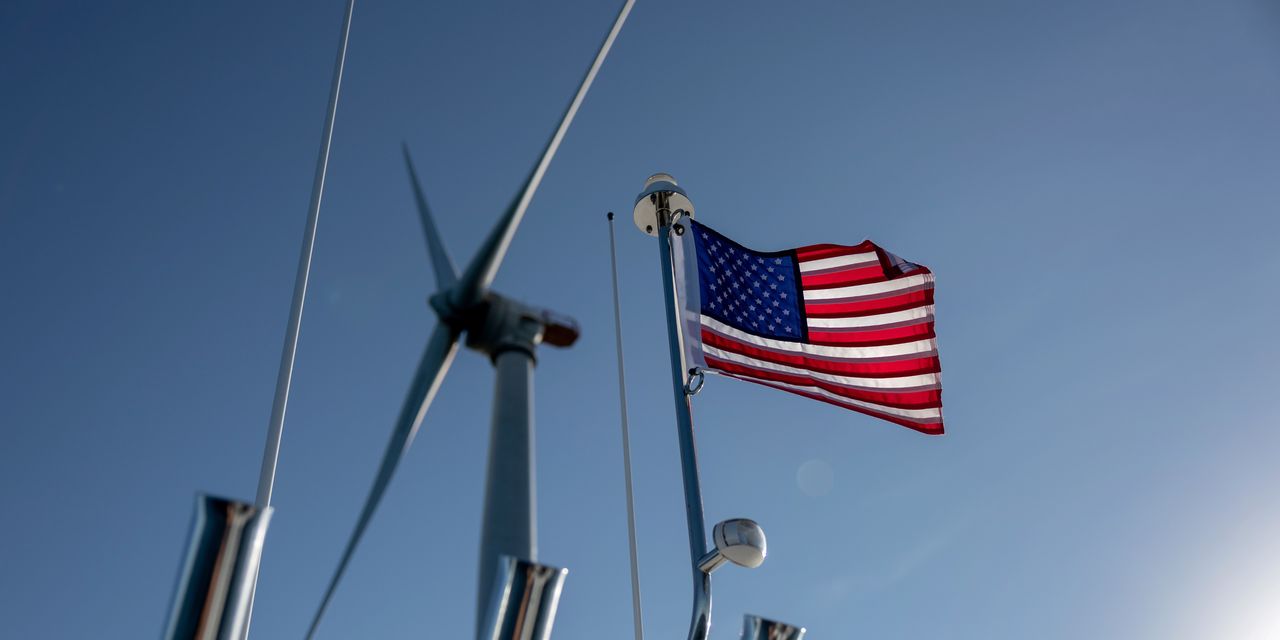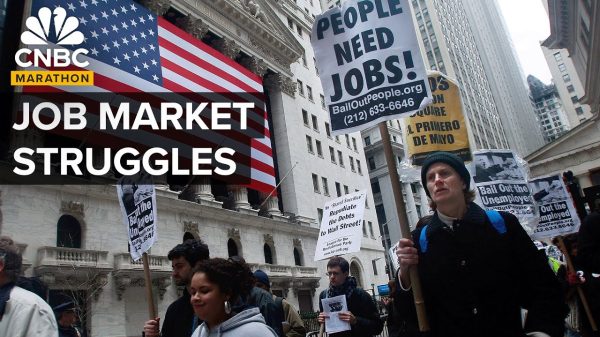The Biden administration early this week approved the construction of the largest wind-power farm in the United States, more than 170 giant turbines to be built roughly 27 miles off the coast of Virginia Beach, Va.
Dominion Energy’s
D,
Coastal Virginia Offshore Wind project, supplemented by federal dollars, is expected to be completed in 2026 and at full operation, can produce enough electricity to power 660,000 nearby homes on shore. That energy source would bolster and eventually replace the mostly natural gas-powered
NG00,
electricity that is contributing to costly climate change.
The wind-power industry’s cheers were quickly muffled, however.
A day after the Virginia news, Danish concern Ørsted
ORSTED,
the world’s largest offshore wind-farm developer, abandoned two U.S. projects in New Jersey in a sudden reversal that surprised state officials.
Ørsted’s David Hardy, who leads its Americas operations, blamed “high inflation, rising interest rates and supply-chain bottlenecks” in a statement. Ørsted is now reviewing its entire U.S. wind portfolio, the company said.
Related: Shares in world’s biggest offshore wind developer plunge to fresh low after taking $4 billion hit on U.S. projects
Because renewable-energy projects are capital-intensive as they’re built from scratch, the industry had taken advantage of historically rock-bottom interest rates to build out wind (as well as solar) farms, at least in areas like traditional fossil-fuel-giant
CL00,
Texas, where windy days are prominent. Increasingly for the U.S., funding has flowed for major offshore wind farms that could play a pivotal role in electricity for the heavily populated coasts.
“Blame ‘high inflation, rising interest rates and supply-chain bottlenecks’ for abandoned New Jersey wind-power plans.”
Now, the Federal Reserve has been raising interest rates, increasing the cost of borrowing without significantly reigning in inflation. And that inflation is making the cost of inputs to build wind turbines, including steel, more expensive.
Ørsted officials on a call said they’ve also struggled to secure the large ocean vessels needed to carry turbines.
“Unexpected high interest rates coupled with supply-chain delays have made it challenging for pre-pandemic contracts to pencil out in today’s world,” Doug O’Malley, director of Environment New Jersey, part of the Environment America federation, told MarketWatch.
“Our hope is that industry and government officials can overcome these short-term obstacles and keep America on track to harness the clean, renewable, unlimited power the wind offers every day,” he said.
A setback to 30 gigawatts by 2030?
Biden, early in his first term, announced a goal of installing 30 gigawatts of offshore wind power by 2030, enough to power 10 million homes and prevent the spewing of 78 million metric tons of carbon-dioxide emissions. Those emissions warm the atmosphere and contribute to more deadly storms, coastal erosion and more.
U.S. offshore wind has been helped along by nearly $8 billion in investments since Biden signed his signature, climate-heavy Inflation Reduction Act a little over a year ago.
Read: Climate winners and losers as the Inflation Reduction Act hits 1-year anniversary
Biden’s team has projected that the U.S. could install 110 gigawatts of offshore wind power by 2050, a major jump considering there is less than 1 gigawatt installed today. Land-based wind farms across the U.S. already produce more than 140 gigawatts of energy, contributing to about 10% of the nation’s energy portfolio.
“‘Unexpected high interest rates, coupled with supply-chain delays, have made it challenging for pre-pandemic [wind-turbine] contracts to pencil out in today’s world.’ ”
For sure, at least when measured by announced plans and pledges, the country has been barreling toward its offshore goal.
To date, the Department of the Interior has approved four New England-based projects that, together with the new Coastal Virginia Offshore Wind project, promise to deliver 5 gigawatts of electricity, enough to power 1.75 million homes with average power use. A total of more than 51 gigawatts of wind power capacity is in the works off U.S. shores and the most ambitious 10 coastal states have combined offshore wind goals of generating more than 81 gigawatts. Exploration of Pacific Coast wind power continues as well, but even costlier floating farms rather than the East Coast’s anchored turbines, will be needed because of the sharp dropoff for the Pacific Ocean’s floor near California.
Investments are ‘more and more challenged’
For the private sector, which has investors to answer to, short-term pain may force them to rethink longer-term wind-energy goals. Some companies invest in the creation of wind and solar farms, but also have interest in natural gas and oil. And their patience can be tried.
“Returns on offshore wind are becoming more and more challenged,” Shell CEO Wael Sawan told Barron’s over the summer just days after a Shell joint venture quit a renewable power contract in Massachusetts.
Traditional energy concerns BP
BP,
and Equinor
EQNR,
this week said they have to write down the value of offshore wind developments in New York by a collective $840 million after failing to secure more attractive pricing from state officials. The companies are so far sticking with the projects.
What’s more, the health of the alternative-energy market hinges in large part on utilities’ willingness to sign contracts for long-term purchases of wind and solar. The utilities may also be investors in the power sources. All told, they tend to view the total costs of renewable power in making decisions, including comparable electricity rates on top of capital spending, and may slip back into favoring traditional-energy sources at the whim of market swings.
This math is known as the levelized cost of electricity, or LCOE, explained here. But as a rough example, a 2020 analysis from the International Energy Agency shows that a 5% rise in interest rates would increase the levelized cost of electricity from a natural gas plant marginally while it could increase the cost of electricity from wind and solar by a third.
Long-term agreements
For wind-sector advocates, it’s the volatility of energy prices that should encourage more U.S.-based alternatives. Fossil-fuel prices are expected to remain volatile in the years and decades to come as geopolitical tensions over energy continue. More than half of new electricity demand through 2025 is expected to be met by low-carbon sources, according to a report from the International Energy Agency.
The Clean Energy Buyers Association tracked nearly 150 deals in 2022 from large corporations making long-term agreements to buy renewable energy to power their operations. Those deals add up to nearly 17 gigawatts of renewable energy, enough to power approximately 12 million homes.
Jason Ryan, a spokesperson for American Clean Power, stressed to MarketWatch the contradiction of industry developments this week, which he deemed “both highs and lows for the U.S. offshore wind industry.”
For instance, over just a few recent days, a final investment decision was announced for New England’s Revolution Wind, another Ørsted project in part. Construction continued on Vineyard Wind 1, near Nantucket in Massachusetts, and at South Fork Wind off New York, and permitting is being finalized on the Coastal Virginia Offshore Wind Project.
“While the news out of New Jersey is a disappointment, our industry continues to show its resilience and the path ahead for the clean energy transition remains promising,” he said. “The news is also a reminder that we need strong partnerships with government and stakeholders, now more than ever.”
Read the full article here













